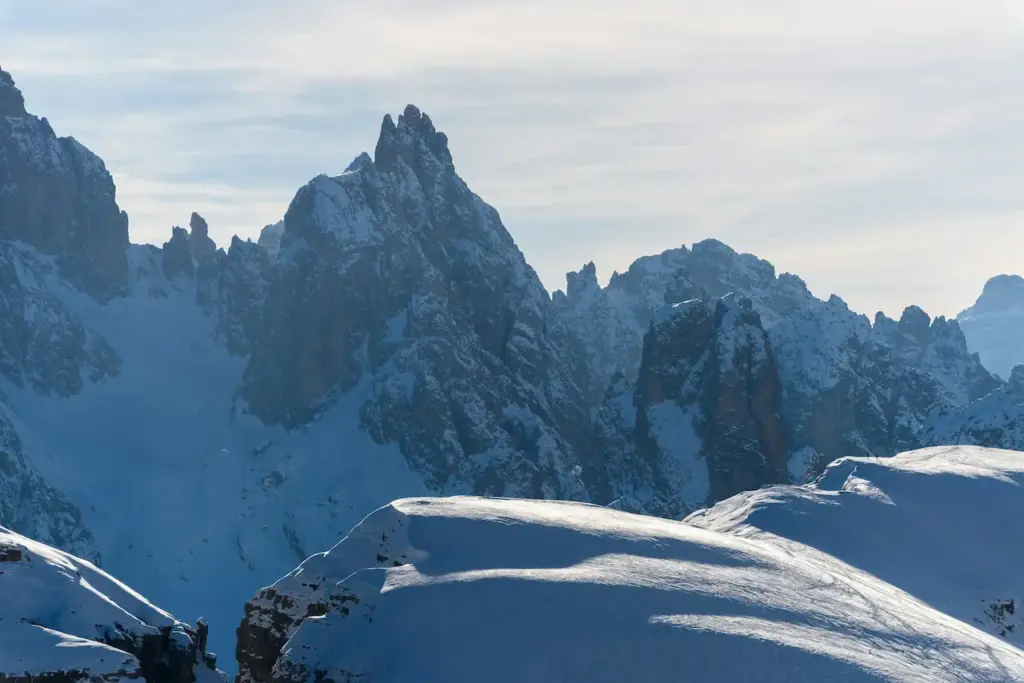The Italian Alps, located in the Monte Elmo region, are a picturesque and breathtaking area of Northern Italy. Known for their soaring snow-capped peaks, glacier-carved valleys, and quaint mountain villages, the Italian Alps offer stunning natural scenery and plenty of opportunities for outdoor recreation.
Monte Elmo specifically is home to some of the tallest mountains and most iconic landmarks in the broader Italian Alps area. In this article, we will provide an overview of the geography, climate, history, attractions, activities, and villages that make up this alpine wonderland.

Italian Alps Geography
The Italian Alps stretch across Northern Italy, bordering France, Switzerland, Austria, and Slovenia. They are part of the larger European Alps system, which extends for over 800 miles across 8 countries. The Italian Alps cover around 35,000 square miles or about 36% of the total land area of Italy.
The ranges that comprise the Italian Alps include the Maritime Alps, Cottian Alps, Graian Alps, Pennine Alps, Lepontine Alps, Bergamasque Alps, Ortler Alps, Adamello-Presanella Alps, Dolomites, Carnic Alps, and Julian Alps.
Monte Elmo is situated within the Graian Alps in the northwestern portion of the Italian Alps. It contains dozens of individual mountain peaks over 10,000 feet, including several of the tallest in Italy, such as Gran Paradiso (13,323 ft), Grivola (13,022 ft), and Punta Nel (12,706 ft).
The landscape consists of jagged, snow-covered peaks, deep glacial valleys, and high-altitude mountain passes. This rugged alpine terrain was largely shaped by glaciers during past ice ages. Major river valleys in the region include the Dora Baltea and Dora Riparia.
Italian Alps Climate
Due to the high elevations, the climate of the Italian Alps is generally cool and wet, with harsh winters and mild summers. Monte Elmo specifically has an alpine climate characterized by cold winters with heavy snowfall and warm, humid summers.
Average winter temperatures are below freezing for 4-5 months each year, typically dropping into the teens and single digits Fahrenheit. Up to 10 feet of snow can accumulate at higher elevations between November and April. The snowpack begins melting by May or June.
Summer temperatures in the valleys and lower mountainsides reach 60-70 F on average while remaining cooler at higher altitudes. Thunderstorms and rainfall are common in summer.
The extreme climate variations based on elevation lead to a diversity of microclimates and ecosystems within a small area in the Monte Elmo region. The harsh conditions also mean that towns and villages were historically isolated during the long winters.
Avalanches pose a continual risk, especially in early spring when meltwaters lubricate the snowpack. Overall, the climate provides both challenges and recreation options for inhabitants and visitors.
Italian Alps History
The Italian Alps have been inhabited since prehistoric times by various Celtic, Rhaetian, and Germanic tribes. In ancient Roman times, Alpine passes were important trade and military routes. During the Middle Ages, Germanic Lombards and other groups established permanent settlements in the valleys and alpine pastures. Feudalism and rural subsistence agriculture dominated in the medieval period.
Monte Elmo specifically was part of the Savoy Kingdom ruled by the House of Savoy dynasty starting in the 11th century. When Italy unified in the 19th century, the Savoy King Victor Emmanuel II became the first King of Italy.
The House of Savoy continued efforts to modernize and industrialize the Italian Alps region while preserving its distinct culture. During World War II, the Italian Alps were the scene of fierce mountain warfare between Italian, French, and German troops, including the battle for strategic high passes.
Following the war, improved roads, tourism infrastructure, and winter sports facilities were developed across the Italian Alps. Today, the economy relies on a combination of tourism, hydropower, forestry, animal grazing, mining, and high-tech manufacturing. However, many small historic villages retain their charming alpine character and strong cultural traditions.
Italian Alps Attractions and Activities
The soaring snow-capped peaks, glaciers, alpine lakes, waterfalls, and valleys offer incredible landscapes to explore in Monte Elmo. Some top natural attractions include:
- Gran Paradiso National Park – Italy’s oldest national park containing jagged peaks, wildlife like ibex and chamois, and scenic valleys.
- Monte Bianco Massif – A dramatic mountain range including Mont Blanc and Monte Rosa, which straddles the Italian-Swiss border.
- Mount Cervino/Matterhorn – The iconic pyramid-shaped peak is visible from many angles.
- Alpine glaciers – Such as the Miage Glacier and Presena Glacier, which can be viewed up close or walked on with a guide.
- Mountain lakes – Picturesque lakes, including Lago Blu and Lago Neri, with their striking blue and black waters.
In addition to the landscape itself, the Italian Alps offer an array of outdoor activities:
- Hiking & trekking – Miles of marked trails ranging from easy valley walks to multi-day hut-to-hut treks. The Alta Via hiking trails are especially famous.
- Mountaineering & climbing – Legendary peaks for experienced climbers as well as easier summits for novices.
- Skiing & snowboarding – Top ski resorts like Breuil-Cervinia, Courmayeur, and Valtournenche offer downhill runs for all abilities.
- Mountain biking & e-biking – Varied trails and backcountry routes through the valleys and peaks.
- Rock climbing & vie ferrate – Equipped routes on cliff faces and narrow ridges.
- Whitewater sports – Kayaking, rafting, and canyoneering on rivers and waterfalls.
- Paragliding & hang gliding – Ride thermals for aerial views of the mountains.
No matter your ability level or adventure style, there are endless recreational possibilities among Monte Elmo’s soaring peaks.
Italian Alps Villages
Dozens of characteristic villages and hamlets dot the mountainsides and valleys of Monte Elmo. These historic settlements have a strong cultural heritage from the Germanic and Latin influences that have long mingled in the region.
Typical architectural features include stone and wood chalets with decorated balconies overflowing with flowers. Communities are centered around small shops, restaurants, and their local Baroque-style church.
Some of the most scenic villages to visit include:
- Courmayeur – A renowned resort village near Mont Blanc known for its cable car rides and lively nightlife.
- Breuil-Cervinia – A quiet village with panoramic views of the Matterhorn.
- Valtournenche – A traditional village of stone houses that serves as a hub for hikers.
- Gressoney-Saint-Jean – A wallet-friendly and family-friendly resort town.
- Alagna Valsesia – A peaceful village surrounded by magnificent peaks.
- Champoluc – A charming hamlet of ancient timber chalets.
From the rustic architecture to the local cuisine to the Alpine culture, each village has its own unique flavor and sense of place. Exploring several during your stay allows you to fully appreciate the cultural diversity within this mountainous region.
A Captivating Mountain Paradise
The Italian Alps located in the Monte Elmo region encapsulate the quintessential alpine experience that has drawn visitors to this area for centuries. From the soaring, snow-capped mountain peaks that pierce the sky to the quaint villages nestled in the valleys below, Monte Elmo is the epitome of an idyllic mountain paradise.
The jagged peaks, carved out over millennia by massive glaciers, create a dramatic landscape that forms the backdrop for the picturesque villages dotted throughout the valleys. The slopes provide endless opportunities for outdoor recreation, from hiking scenic trails to skiing down breathtaking descents. The local culture and architecture add to the old-world alpine charm.
Conclusion
With its jagged snow-capped peaks, verdant valleys, charming villages, and abundance of outdoor adventures, the Italian Alps of Monte Elmo provide an idyllic mountain escape. The breathtaking landscapes shaped by glaciers, mild summers, and harsh yet snowy winters create a one-of-a-kind alpine environment to discover.
Whether you’re looking for scenic hikes, heart-racing downhill skiing, or cultural immersion in sleepy villages, Monte Elmo offers an unforgettable experience. The Italian Alps have captivated visitors for centuries and continue to provide natural majesty and rural mountain traditions.

